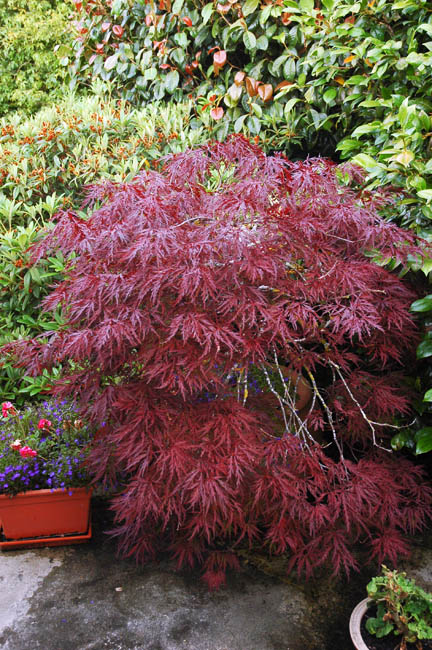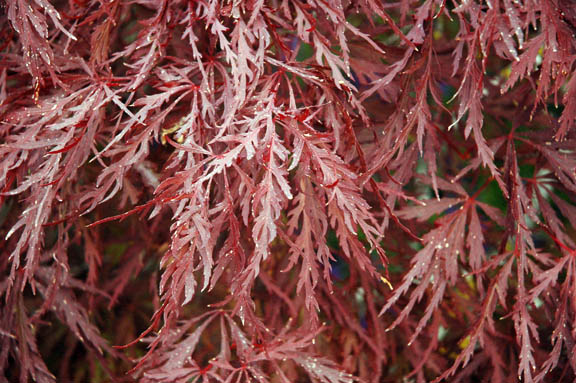| General Description | A specimen that is small, yet hardy slow growing tree. It forms a mushroom to dome-like shape with finely cut foliage. |
| ID Characteristic | Filigree like foliage, vibrant autumn colour and attractive contorted and twisted branches, are the main defining characteristics of this cultivar. They also have lovely tiny reddish-purple flowers when in bloom. |
| Shape | This cultivar has a neat and compact mounding form with ascending branches. |
| Landscape | Often used in small gardens as a focal point. They can also can be grown in a large container, and are great for bonsai. Ideal for patio, low maintenance and woodland gardens. They are also a choice specimen to plant near a pool, so that the artistic form of the branches may reflect in the water. It is best planted in a sheltered location. |
| Propagation | This tree should be propagated by grafting. Since their delicate twigs grow down rather than upward, they are grafted onto a standard. The height of the standard understock it is grafted to determines the ultimate height of the tree. |
| Cultivation | It can tolerate full sun or partial shade, although it seems to thrive in dappled shade. Well drained, fertile soil that has a neutral to acidic level is recommended for this cultivar. It requires some shelter from strong winds, as this can scorch the leaves. |
| Pests | Aphids and horse chestnut scale are the main pests that can affect this cultivar. It is also susceptible to verticillium wilt. Their delicate leaves may also be damaged by a late frost in the early spring or wind and sunburn if planted in exposed locations. |
| Notable Specimens | The A. M. Cuddy Gardens, Strathroy, Ontario, Canada. |
| Habitat | Horticultural origin. |
| Bark/Stem Description | Smooth grey bark. It has a very attractive branching form that creates winter interest. |
| Flower/Leaf Bud Description | The opposite buds are cone-like shaped and chestnut in colour. |
| Leaf Description | Palmate leaf, delicate, lace-like, deeply cut, 5 - 9 lobes. |
| Flower Description | Small, yet attractive red-purple coloured flowers. |
| Fruit Description | A feathered, vigorously veined, two winged smara develops after the plant flowers in June. |
| Colour Description | Beautiful colour in spring, summer and autumn. Transforming from a reddish-green in the spring and summer to a vibrant orange in the autumn. |
| Texture Description | Fine textured. |

